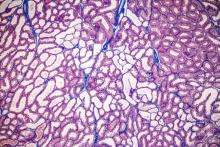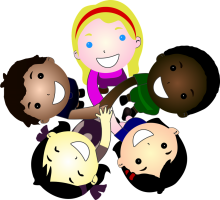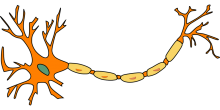Recent Publications

Chaim Putterman: The T Cell Receptor Repertoire in Neuropsychiatric Systemic Lupus Erythematosus Front Immunol .)
In systemic lupus erythematosus (SLE), widespread T cell infiltration into target organs contributes to inflammation and organ damage. Autoreactive T cells become aberrantly activated in this disease due to dysfunctional T cell receptor signaling that lowers the activation threshold. Characterizing the T cell repertoire can provide further insight into the specific homing and proliferation of these T cells into lupus target organs. In the spontaneous lupus model, MRL/lpr, the TCR repertoire has not been fully elucidated, especially for T cells infiltrating the brain. Our aim was to investigate and compare the TCR repertoire between MRL/lpr mice and its congenic controls, MRL/MpJ, and within MRL/lpr tissues.

Amiel A. Dror: Striatin Is Required for Hearing and Affects Inner Hair Cells and Ribbon Synapses (Front Cell Dev Biol .)
Striatin, a subunit of the serine/threonine phosphatase PP2A, is a core member of the conserved striatin-interacting phosphatase and kinase (STRIPAK) complexes. The protein is expressed in the cell junctions between epithelial cells, which play a role in maintaining cell-cell adhesion. Since the cell junctions are crucial for the function of the mammalian inner ear, we examined the localization and function of striatin in the mouse cochlea. Our results show that in neonatal mice, striatin is specifically expressed in the cell-cell junctions of the inner hair cells, the receptor cells in the mammalian cochlea.

Worood Sirhan, Ron Piran: Current Approaches in Diabetes Treatment and Other Strategies to Reach Normoglycemia (Curr Top Med Chem.)
Cells are mainly dependent on glucose as their energy source. Multicellular organisms need to adequately control individual glucose uptake by the cells, and the insulin-glucagon endocrine system serves as the key glucose regulation mechanism. Insulin allows for effective glucose entry into the cells when blood glucose levels are high, and glucagon acts as its opponent, balancing low blood glucose levels. A lack of insulin will prevent glucose entry to the cells, resulting in glucose accumulation in the bloodstream. Diabetes is a disease which is characterized by elevated blood glucose levels. All diabetes types are characterized by an inefficient insulin signaling mechanism. This could be the result of insufficient insulin secretion as in the case of type I diabetes and progressive incidents of type II diabetes or due to insufficient response to insulin (known as insulin resistance). We emphasize here, that Diabetes is actually a disease of starved tissues, unable to absorb glucose (and other nutrients), and not a disease of high glucose levels. Indeed, diabetic patients, prior to insulin discovery, suffered from glucose malabsorption. In this mini-review, we will define diabetes, discuss the current status of diabetes treatments, review the current knowledge of the different hormones that participate in glucose homeostasis and the employment of different modulators of these hormones. As this issue deals with peptide therapeutics, special attention will be given to synthetic peptide analogs, peptide agonists as well as antagonists.

Similar Procedural Success of Transcutaneous Aortic Valve Replacement with Prosthesis Valve Sizing by Either Three-Dimensional Transesophageal Echocardiography Modeling or Computed Tomography (J Am Soc Echocardiogr .)
Prosthesis size selection for transcutaneous aortic valve replacement (TAVR) is commonly done by aortic annulus measurements in cardiac computed tomography angiography (CCTA). Correct sizing of the aortic annulus is of paramount importance to a successful implantation. Undersizing may result in paravalvular leak and patient-prosthesis mismatch, both of which are responsible for significant morbidity, while oversizing may result in catastrophic outcomes such as aortic annulus rupture. We sought to determine whether procedure outcomes of TAVR are comparable for patients whose aortic annuli were measured by 3D-TEEm artificial intelligence modeling versus CCTA-derived modeling. (Sagi Gleitman, Gabby Elbaz-Greener, Diab Ghanim, Fabio Kusniec, Asaf Rabin, Doron Sudarsky, Liza Grosman-Rimon, Offer Amir, Shemy Carasso)

Anthony Luder, Alon Yulevich: Pediatrician, watch out for corona-phobia (Eur J Pediatr .)
The current outbreak of COVID-19 raging globally is taking a heavy toll on the adult population, with a rapidly growing number of newly infected and critically ill patients. However, to date, mortality rate among children is low as they mostly suffer from a mild disease. Yet, other more routinely encountered childhood diseases do not stand still and continue to be the main share of pediatricians' everyday challenges....Our objective is to highlight the possibility that measures taken to mitigate this pandemic may lead to a substantial delay in the diagnosis of other non-COVID-19 related diseases.

Rola Nakhoul, Farid Nakhoul, Nakhoul Nakhoul: Autophagy in diabetic nephropathy: a review (Int Urol Nephrol .)
Diabetes mellitus (DM) is the leading cause of end stage renal disease. 40% of the patients worldwide will require replacement therapy after 20 years of DM worldwide. Early-stage diabetic nephropathy is characterized by hyperfiltration related to hypeglycemia-induced afferent artery vasodilatation with micro-and macroalbuminuria. Later on, proteinuria with arterial hypertension may appear, culminating in glomerular filtration rate (GFR) decline and end stage renal disease. Forty percent of diabetic patients develop microvascular and macrovascular complications, with increased risk among patients with genetic predisposition, such as Haptoglobin 2-2 phenotype. The most frequent complications in the daily clinical practice are diabetic kidney disease, diabetic retinopathy and vascular disease, such as coronary artery disease and stroke. Various pathways are involved in the pathogenesis of diabetic kidney disease. Chronic systemic inflammation and the inflammatory response, such as increased circulating cytokines (Interleukins), have been recognized as main players in the development and progression of diabetic kidney disease. DM is also associated with increased oxidative stress, and alterations in carbohydrate, lipid and protein metabolism. Overexpression of the renin-angiotensin-aldosterone system (RAAS) in the kidney, the vitamin D-Vitamin D receptor-klotho axis, and autophagy. Differences in the ATG5 protein levels or ATG5 gene expression involved in the autophagy process have been associated with diabetic complications such as diabetic kidney disease. Under normal blood glucose level, autophagy is an important protective mechanism in renal epithelial cells, including podocytes, proximal tubular, mesangial and endothelial cells. Down regulation of the autophagic mechanism, as in hyperglycemic condition, can contribute to the development and progression of diabetic kidney disease.

Milana Frenkel-Morgenstern: SCOR: A secure international informatics infrastructure to investigate COVID-19 (J Am Med Inform Assoc .)
Global pandemics call for large and diverse healthcare data to study various risk factors, treatment options, and disease progression patterns. Despite the enormous efforts of many large data consortium initiatives, scientific community still lacks a secure and privacy-preserving infrastructure to support auditable data sharing and facilitate automated and legally compliant federated analysis on an international scale. Existing health informatics systems do not incorporate the latest progress in modern security and federated machine learning algorithms, which are poised to offer solutions. An international group of passionate researchers came together with a joint mission to solve the problem with our finest models and tools. The SCOR Consortium has developed a ready-to-deploy secure infrastructure using world-class privacy and security technologies to reconcile the privacy/utility conflicts. We hope our effort will make a change and accelerate research in future pandemics with broad and diverse samples on an international scale.

Chaim Putterman: Quantitative planar array screen of 1000 proteins uncovers novel urinary protein biomarkers of lupus nephritis (Ann Rheum Dis .)
The goal of these studies is to discover novel urinary biomarkers of lupus nephritis (LN).

M Alcalay: Magnetic imaging defecography results are comparable to high-resolution manometry and conventional X-ray defecography in the assessment of functional pelvic floor disorders (Tech Coloproctol .)
X-ray defecography or magnetic resonance defecography (MRD) and high-resolution anorectal manometry (HR-ARM) are essential for the diagnosis of pelvic floor disorders (PFD). However, there is only scarce information available about the accuracy of MRD in the functional assessment of the pelvic floor. The aim of this study was to examine the accuracy of MRD in the diagnosis of pelvic floor disorders by examining the intra-test agreement with x-ray defecography and HR-ARM in patients with PFD.

Boris Fitchman, Yuval Salzberg, Amnon Harel: G 4 C 2 Repeat RNA Initiates a POM121-Mediated Reduction in Specific Nucleoporins in C9orf72 ALS/FTD (Neuron.)
Through mechanisms that remain poorly defined, defects in nucleocytoplasmic transport and accumulations of specific nuclear-pore-complex-associated proteins have been reported in multiple neurodegenerative diseases, including C9orf72 Amyotrophic Lateral Sclerosis and Frontotemporal Dementia (ALS/FTD). Using super-resolution structured illumination microscopy, we have explored the mechanism by which nucleoporins are altered in nuclei isolated from C9orf72 induced pluripotent stem-cell-derived neurons (iPSNs).

Talal Salti, Khaled Khazim, Rami Haddad: Glucose Induces IL-1α-Dependent Inflammation and Extracellular Matrix Proteins Expression and Deposition in Renal Tubular Epithelial Cells in Diabetic Kidney Disease (Front Immunol .)
Diabetes mellitus is linked with metabolic stress that induces cellular damage and can provoke renal inflammation and fibrotic responses that eventually lead to chronic kidney disease. Because the inflammasome, interleukin 1 (IL-1), IL-1α/IL-β, and IL-1R are central elements of kidney inflammation and pharmacological IL-1R antagonist (IL-1Ra) was shown to prevent or even reverse diabetic nephropathy (DN) in animal models, we explored the intrinsic expression of IL-1 molecules in kidney tissue of DN patients as regulators of renal inflammation. We used biopsies taken from DN patients and controls and show a high level of IL-1α expression in renal tubular epithelial cells, whereas both IL-1 agonistic molecules (i.e., IL-1α and IL-1β) were devoid of the glomeruli.

Gassan Moady, Daisy Shtern, Shaul Atar: The additive diagnostic value of heart-type fatty acid binding protein in patients presenting early with chest pain (Eur J Intern Med)
Acute myocardial infarction (AMI) is one of the most serious conditions encountered in the emergency room (ER), with outcomes that are highly affected by the time elapsed since symptoms onset. The diagnosis of AMI is currently based on clinical judgment, electrocardiogram (ECG), biomarkers, and in cases of uncertainty, imaging modalities. Currently, high-sensitivity troponin (hs-cTnI) is the recommended biomarker for early diagnosis of AMI. Among other putative biomarkers, heart-type fatty acid binding protein (H-FABP) has recently gained focus as a diagnostic and prognostic biomarker. In the current study, we evaluated the diagnostic accuracy of H-FABP and hs-cTnI for early (within three hours after symptom onset) diagnosis of AMI, separately and in combination. We hypothesized that multi-marker strategy using the two biomarkers in this setting may improve the triage of chest pain in the ER, and allow for safe early discharge of patients with no evidence of AMI.

Alon Barash: Rib Cage Anatomy in Homo Erectus Suggests a Recent Evolutionary Origin of Modern Human Body Shape (Nat Ecol Evol .)
The tall and narrow body shape of anatomically modern humans (Homo sapiens) evolved via changes in the thorax, pelvis and limbs. It is debated, however, whether these modifications first evolved together in African Homo erectus, or whether H. erectus had a more primitive body shape that was distinct from both the more ape-like Australopithecus species and H. sapiens. Here we present the first quantitative three-dimensional reconstruction of the thorax of the juvenile H. erectus skeleton, KNM-WT 15000, from Nariokotome, Kenya, along with its estimated adult rib cage, for comparison with H. sapiens and the Kebara 2 Neanderthal.
Nomy Dickman (et al). "6. Pretest Bias: Supporting Undergraduate Learning Through Guided Self-Assessment and Reflective Writing." Intervention Research in Educational Practice: Alternative Theoretical Frameworks and Application Problems (2020): 127.
Improving learning and teaching at schools or universities may start with choosing evidence-based interventions and practices, but does not end there. To ensure sustainable changes to programs in educational practice, interventions need to address complex issues related to theories, research designs, and measurements. This book presents typical but often overlooked problems in intervention research in educational practice. These problems are embedded in various educational areas such as, amongst others, school effectiveness, instructional design or motivational aspects of teacher trainings.
With contributions by
Hermann Astleitner, Josef Eisner, Ulrike Greiner, Franz Hofmann, Michaela Katstaller, Nomy Dickman, Gabriela Gniewosz, Stephanie Musow, Alexander Naumann





